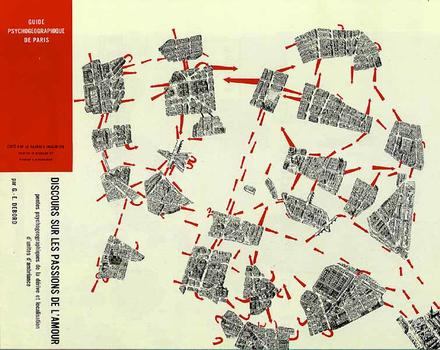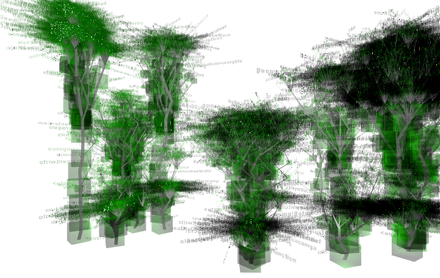Zase jsem prozkoumával on-line zdroje k tomuto tématu a několik zajímavých odkazů by z toho bylo:
První obrázek je mapka Paříže Guy Deborda, jednoho z prvních, kdo psychogeografii definoval jako the study of the precise laws and specific effects of the geographical environment, consciously organized or not, on the emotions and behavior of individuals. Ve filmu A Critique of Separation (1961), "The sectors of a city…are decipherable, but the personal meaning they have for us is incommunicable, as is the secrecy of private life in general, regarding which we possess nothing but pitiful documents".
*Psychographs are scenes, incidents, accidents, displays, actions, acts, events, signs, symbols, settings, episodes, pictures, icons, runes, marks, warnings, pointers, ideograms, inscriptions, tokens, auguries, spectacles, omens or anything that gives evidence voluntary or even unconscious, of an event, mood or mental or psychical state.
* psychographs are recorded moments of sensuous touch by genius loci.
Druhý obrázek je les vygenerovaný pomocí appletu na Textone.org jako vizualizace stránek konvergence.info
Jaké emoční vrstvy v prostoru si vytváříme? Graffiti je záznam situací, nálad, které se na nějakém místě odehrály. Média by měly mít schopnost tyhle vrstvy spojovat do jazyka. Architektura je nejzákladnějším způsobem artikulace času a prostoru, modulace reality.
“The city of panic is the place where nobody has the time anymore to get close to each other, for the caresses for the pleasure or for the slowness of whispered words. Advertisement exalts and stimulates the libidinous attention, person to person communication multiplies the promises of encounters, but these promises never get fulfilled. Desire turns into anxiety and time contracts.” Franco Berardi (Bifo), City of Panic, 2007

